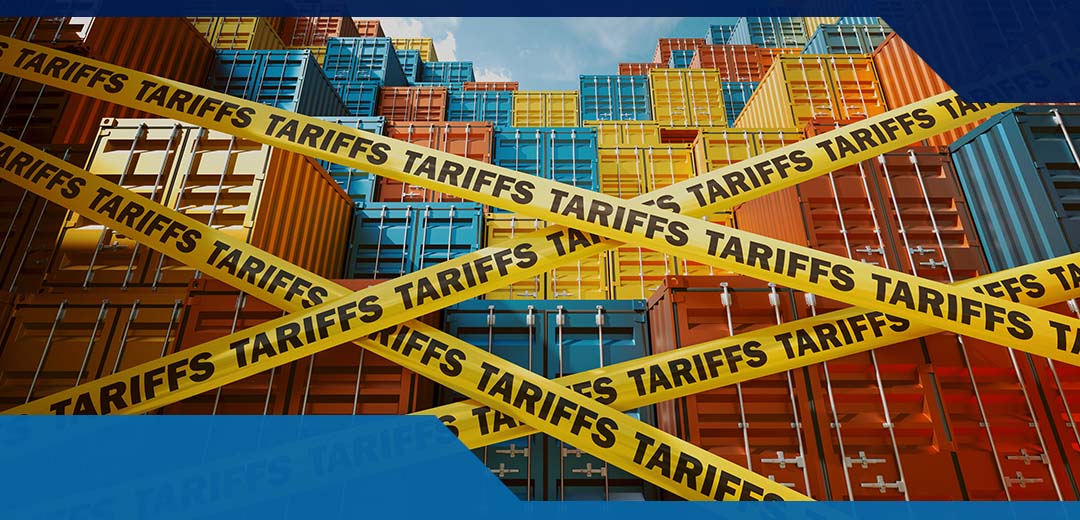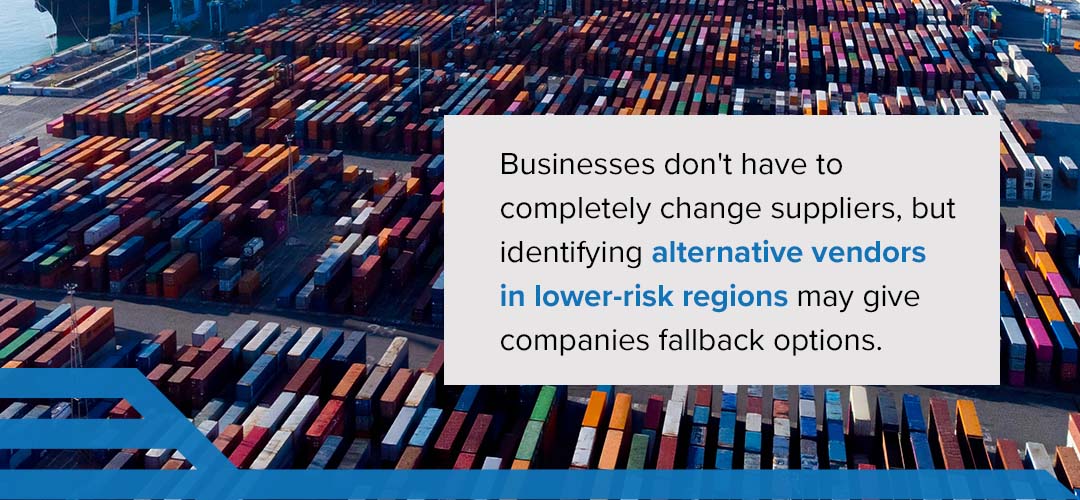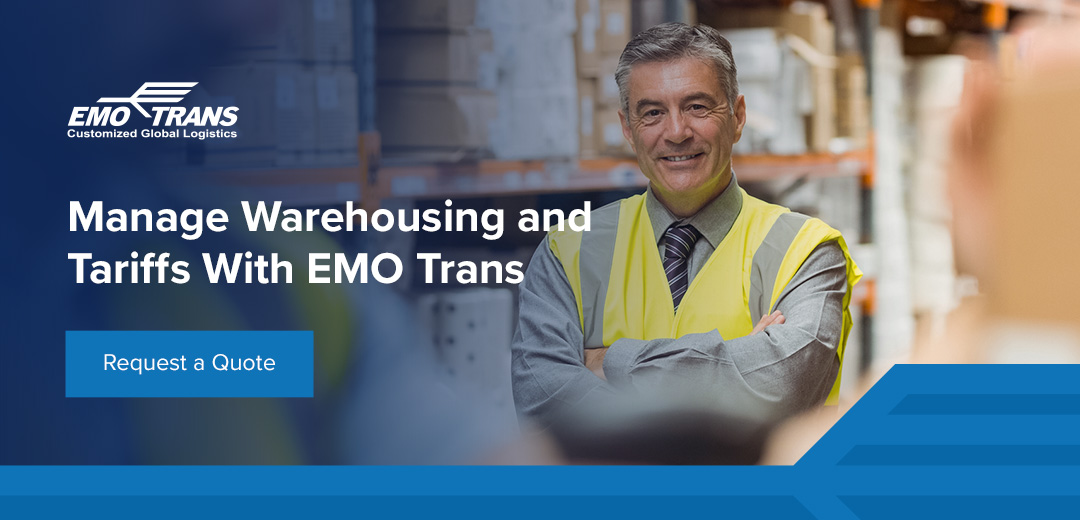
Tariffs can disrupt costs, timing and sourcing, making business owners question whether they should purchase inventory ahead of time to hedge against tax hikes. Purchasing products pre-tariff enactment can reduce the landed costs of goods, providing pricing stability should demand peak. However, this approach poses a challenge with storage and quality control.
Explore how tariffs affect inventory decisions and how to stay prepared.
The Impact of Tariffs on Inventory
Below are some ways taxes on imported goods impact inventory management:
- Increased costs: Tariffs inflate the landed cost of goods. For logistics and procurement managers, this means reevaluating the unit economics of product lines. As rates increase, so does the cost of imported goods, propelling businesses to absorb the cost or raise the price of consumer goods.
- Supply chain disruption: Tariffs may drive businesses to change suppliers, shift manufacturing locations or explore local sourcing. Supplier changes come with delays, new lead times or minimum order requirements, which can complicate planning and require businesses to stock more inventory.
- Cash constraints: Holding more inventory means more capital is tied up in stock. Businesses with limited cash reserves may experience challenges in determining which items to stockpile and when. This can limit flexibility in investing in technology, staffing or expanding warehousing capabilities.
- Decreased demand and slower turnover: When tariffs drive up prices, end users may reduce their orders or seek lower-cost alternatives. As a result, inventory turnover slows, increasing carrying costs and the risk of obsolescence.
The Benefits of Buying Inventory Ahead of Time
Buying ahead can help businesses mitigate the impact of tariffs when hikes are anticipated. Here’s why this approach can be a smart move:
- Lower costs and price stability: Buying before a tariff is enacted can lock in lower landed costs, offering savings on units. This also protects your cost base from sudden changes, which helps maintain more stable pricing downstream. Larger advance orders may give businesses bargaining power with suppliers or freight carriers.
- Supplier management: Committing to larger or earlier orders can build trust with vendors. This may lead to better terms, priority allocation during shortages or shared contingency planning.
- Profitability and strategic advantage: If your competitors are caught off guard by tariffs and raise prices, you can maintain pricing or preserve margins. Businesses that maintain stock when others can’t deliver may acquire new customers in industries where reliability is as valuable as price.
- Reduced uncertainty: Having products on hand ensures you’re not caught short during tariff-driven backlogs, supplier changes or customs slowdowns. Forward buying also lets you choose cost-efficient shipping methods like ocean freight instead of expedited air, reducing transportation costs.
Strategies for Inventory Control and Tariffs
Effective operation strategies may help businesses absorb shock without compromising service, revenue or compliance. Here are five ways companies can balance inventory management and tariffs.
1. Forecast and Plan for Demand
Forecasting helps businesses align purchasing, warehousing and shipping decisions. They can run models on possible tariff hikes and see how they affect pricing, margins and reorder points. Companies can also improve forecasting by getting input from sales teams and market data if they operate in sectors sensitive to pricing shifts.
Another valuable method to implement is a rolling forecast. Businesses can assess current and emerging trends and update them frequently so they can pivot when tariff news breaks or market demand shifts.
2. Diversify Your Supply Chain

Diversifying the supplier base offers flexibility. Businesses don’t have to completely change suppliers, but identifying alternative vendors in lower-risk regions may give companies fallback options.
However, the focus shouldn’t just be on unit price. Businesses need to evaluate total landed costs, which include duties, freight and delivery times. A slightly higher unit cost outside a tariff zone may end up more cost-effective than a lower-cost item that’s heavily taxed.
3. Conduct Regular Inventory Audits
Tariffs affect unsold inventory with shelf life issues or declining value, which can become a liability if there’s already an excess.
Audits tighten your recording cadence by helping businesses avoid unnecessary reorders that hold up capital. They also reveal where inventory may no longer align with demand patterns or where sourcing strategies have fallen out of sync with current tariff risks.
4. Collaborate With Suppliers
The more closely you work with suppliers, the better you can plan around tariff risk together. Ask suppliers to alert you about material changes, sourcing shifts or region-specific trade developments.
Businesses can work with suppliers on shared forecasts, inventory holds or bonded storage options that delay duty payments. Some suppliers may provide alternative supply options, giving you the flexibility to time imports.
5. Partner With a Logistics Company
Companies like EMO Trans offer inventory control and warehouse management services that give businesses better data on the whereabouts of their goods.
They help businesses optimize transportation modes, explore bonded warehousing and assist with customs clearance.
These companies work with businesses to align supply chains with tariff planning. When businesses collaborate with a logistics partner who understands their terrain, they can handle tariffs with foresight.
The Impact of Tariffs on Warehousing
When companies stockpile goods ahead of tariff hikes, it can impact warehouse operations in the following ways:
- Increased storage costs: Longer dwell times increase holding costs and tie up working capital in inventory that might not move for months.
- Space constraints: More inventory can mean less physical flexibility. A warehouse designed for efficient flow can become gridlocked, slowing down pick-pack-ship operations and leading to delays in fulfillment. It also limits a company’s ability to receive new shipments.
- Quality control: Longer storage periods in facilities not optimized for long-term holding can degrade perishables or sensitive products. Dust, humidity and temperature variation can affect product integrity.
- Regulatory compliance: Importing more goods may expose companies to new customs classifications or documentation requirements. If goods are misclassified, businesses risk audits, fines or delays that nullify their cost-saving efforts.
Warehouse Management and Tariffs Best Practices
When tariffs interrupt supply chains, warehouse management becomes a critical component of maintaining operations.
Here are four best practices to help manage warehousing.
1. Use Free Trade Zones
Free Trade Zones (FTZs) are designated areas where imported goods can be stored, processed and exported without being subject to standard tariff duties.
Businesses can defer, reduce or eliminate duties when products are exported from the FTZ. Tariffs are applied only when goods are moved from the FTZ into the domestic market, giving businesses more time to plan and adjust to changes in tariff structures.
2. Choose Your Warehouse Location Wisely
If your business imports products directly from overseas, situating your warehouse near a major shipping hub can reduce shipping time and reduce the risk of delays. If the means allow, strategically placing warehouses in different regions can shield you from regional tariff shifts or other trade barriers that affect a particular region. Additionally, consider areas with well-developed logistics infrastructure to facilitate faster shipment in case you need to reroute.
3. Optimize Warehouse Layout
A strategic warehouse layout increases operational efficiency and allows for more adaptable storage options. A few ways to arrange your floor space include:
- Packing products according to size, weight, shape, packaging and storage requirements.
- Streamlining the movement of goods through your warehouse to minimize time spent on inventory checks and order fulfillment.
- Using vertical storage or modular shelving systems to maximize limited space.
4. Work With a Trusted Warehouse Services Company
Warehouse service providers bring deep knowledge of logistics, inventory management and supply chain best practices. The perks of working with an experienced provider include:
- Customized solutions: Consultants can provide a warehouse strategy that accounts for your needs.
- Scalability and flexibility: Providers offer short and long-term storage options. They can also store various goods, including perishable and sensitive items.
- Technology integrations: Providers use warehouse technologies to streamline operations. These tools provide real-time visibility, inventory tracking and detailed reports to help teams stay in control.
- Ongoing support: They provide support and address concerns for the best customer experience.
Manage Warehousing and Tariffs With EMO Trans
EMO Trans has nearly 60 years of experience helping businesses handle the logistical challenges of global trade. Whether you need to stock ahead of a tariff hike, store delicate parts and accessories or manage temperature-sensitive inventory, our warehouse services can adapt to your needs.
With warehouse facilities as large as 3,000 square feet, we can meet your exact requirements.

